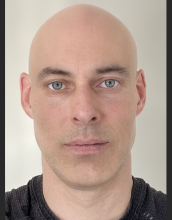Summary
Disclaimer: This summary has been generated by AI. It is experimental, and feedback is welcomed. Please reach out to info@qconsf.com with any comments or concerns.
Overview:
This presentation outlines the journey and strategy behind developing scalable UI systems for internal tools at Meta. Cindy Zhang discusses the creation and adoption of the Cross Design System (XTS), aiming to unify internal tool development across Meta's diverse teams and extensive infrastructure.
Key Points:
- Origins of XTS: Initiated as a grassroots effort to improve internal tooling infrastructure, focusing on enhancing efficiency and user experience.
- Scale and Impact: Over 10,000 internal tools use the system, managed by a core team of around 10 engineers, showcasing broad adoption and significant reach.
- Challenges and Solutions:
- Initial dependence on existing web infrastructure not suited for complex internal tools.
- Implementation of a shared component library to modernize internal tools, enhancing component complexity and usability.
- Community and Collaboration: Emphasizes the importance of community engagement and cross-team collaboration to drive innovation and adoption across the company.
Main Challenges and Overcoming Strategies:
- Establishing a Unified Design System: Focused on centralizing efforts to reduce redundancy and improve consistency across tools.
- Managing Growth and Scalability: Addressed through effective collaboration and leveraging company infrastructure such as mono repos to streamline distribution and updates.
- Combatting Stagnation: Encouraged continuous innovation and adaptation, inspired by community feedback and evolving operational needs.
Long-term Vision:
The team aims to continue evolving the platform by integrating with emerging technologies, optimizing performance, and fostering a sustainable culture of innovation and collaboration within Meta.
Conclusion:
Cindy concludes by emphasizing the importance of community engagement and cultural impact, stating that while code may change, the culture built around these systems creates lasting influence.
This is the end of the AI-generated content.
Abstract
Meta’s internal tools empower the company to operate efficiently, enabling the creation of unique, tailored solutions that fit evolving business needs.
By leveraging scalable design systems, expert teams, and collaborative community engagement we can build tailored internal tools at scale and transform an organization’s tooling landscape.
Speaker

Cindy Zhang
Front End Engineer, InfraX @Meta
Cindy Zhang is a Front End Engineer working on internal tooling infrastructure and design systems at Meta. She specializes in building scalable user interfaces and infrastructure tools that empower Meta’s engineering teams to work more efficiently. Cindy is passionate about delivering high-impact solutions and collaborating across teams to drive innovation in developer experience.





